[WIP] Sea Elves Outpost
Happy June! Happy start to the meteorological summer! We're having a little heat wave in Northern California (80 F / 27 C here in San Francisco, but more like 100 F / 38 C just a few miles inland). So it sounds like a perfect time for the beach.
I haven't posted new maps in a few weeks because I was busy working on a few big ones. Right now I'm working on the interiors for the ziggurat I created to play with the new stairs annual. But while I was working on the lighthouse (more more experimentation with stairs), I got the idea of doing a proper fully underwater adventure. Something that the adventurers would need a Water Breathing spell or similar magic or innate ability for.
I have three ideas. One is an underwater lair of a sea witch or sea hag. That's ready to be posted next. Another is a fully underwater fortress or castle. I haven't started that one yet. But for this one, I wanted to do a Sea Elf Outpost that's a combination of caves v. construction, and underwater v. above. This Sea Elf Outpost is probably my favorite map of all of the ones I've created. It uses Marine Dungeons as the base, with fills and foliage symbols from Forest Trails and furniture from DD3.
In my campaign world, sea elves are reclusive and distrustful of the surface world. When they have to go about on land, they disguise themselves as high elves, so most "landlubbers" don't even know they exist. At this outpost, the sea elves can secretly spy on a nearby human city and the movements of the human Lord Admiral's navy.
Here's the island from above as the crow flies -- or in this case, as the seagull flies.
To give you a sense of perspective, this map is 1000 x 800 feet, and the hillside along the beach stretches about 625 feet. On the images with a grid, each square is five feet.
Seems uninhabited. But if we could use x-ray vision to see below the hill, this is what we'd see:
Come on in! Let me give you a proper tour. First, let's start with the main entrance (#1) and the first guard post (#2).
These underwater passageways eventually lead us to the Welcome Chamber (#3), sort of an underwater reception room. To the south is the underwater gardens (#4) where the sea elves grow various sea grasses, seaweeds, and marine mushrooms. To the east is the Great Hall (#5), with a storage room (#6) to the north. To the south, there are two locked rooms: the armory (#7) with spears, tridents, nets, and other weapons suitable for underwater combat, and the treasury (#8).
Next on our tour, we find three VIP bedrooms (#9) as well as group barracks (#10) and a storage room (#11). Of course, ordinary beds would be useless in an underwater bedroom. Who wants soggy sheets? I figured they'd probably use hammocks that they can tie themselves into so they don't drift away in their sleep (like astronauts in zero gravity). The hammocks connect to a wall on one side and a pillar on the other.
Next up, we have a room that has been nicknamed the Transition Room (#12), as it transitions from underwater to surface land. It's one of three rooms with ceilings high enough that the water doesn't touch the ceiling here, so you can pop your head above water even in the marine parts of the room. To the north is a room (#13) where folks can dry off and change their clothing, though the sea elves generally wear lightweight linen clothing that dries quickly on their own. Room #14 is called the Lesser Hall. It's nicknamed the Map Room because it's where the outpost commander and his staff pour over maps and other documents, which couldn't really be done underwater (unless they used clay tablets or waxed paper, maybe). To the north is another storeroom (#15), and then there's a dining hall (#16), kitchen (#17), and pantry (#18).
South of the Transition Room, an underwater passageway takes you to the second of the three rooms where the water doesn't reach the high ceilings: the chapel (#16). This room gave me an excuse to play with the brass inlays that I love so much, as well as the partially-submerged pillars with the ripple effect, and the partially submerged stairs. The orange/pink tiled area is an elevated platform. Maybe I should put chairs or something on it to make it clearer that it's above water. In my campaign world, elves use henge stones as places of worship, usually with seven inner stones representing the seven gods of the elven pantheon. Here, the sea elves have used pillars as a substitute.
From the dry passageways that head north from the chapel or east and then south from the dining hall, we get to the above-water bedrooms. The outpost commander's room is #20, and then there are two double-occupancy VIP rooms (#21) and dry barracks with seven beds (#22). Room #23 is a recreation room where during downtime, the sea elves stationed here can play games or make music (there's a harp on the table).
Next we come to the third room where the water doesn't touch the ceiling, my favorite room of the outpost, called the Dolphin Room (#25). Here, a separate passageway to the outside allows for intelligent marine allies to visit and confer with the sea elves: merfolk, intelligent dolphins, and an intelligent octopus. (Not sure if the turtles are also intelligent or if they just wandered in.) A platform on the west side is elevated above the water, where there's a chest with balls, hoops, and other lightweight, floating toys that the elves and dolphins use in various games they've devised. A dry passageway takes you to the lockup (#26), where unwary landlubbers who've stumbled across the elves may be held.
To the east, the Great Staircase (#27) takes you winding up to the top of the hill, where elves are posted as lookouts. On the way, you'll pass a locked room (#28) with a teleportation portal and an open room (#29) where the sea elves stash their bows and arrows and other land weapons.
A spiral staircase (#30) leads to the outside above the top of the hill overlooking the beach. (You can barely make out the top of the stairs above the #30 label.)
And one last feature on the island: the Alligator Cove (#31). The alligators are enough to deter casual visitors from the island, and the sea elves do enough secret mischief to more determined visitors to convince locals that the island is haunted. (The alligator symbols are actually crocodiles, but I got the names mixed up. They come from Dundjinni Archives.)
And that's the end of our tour of the Sea Elf Outpost! It took me a few weeks, which is why I haven't had a chance to post anything new recently.


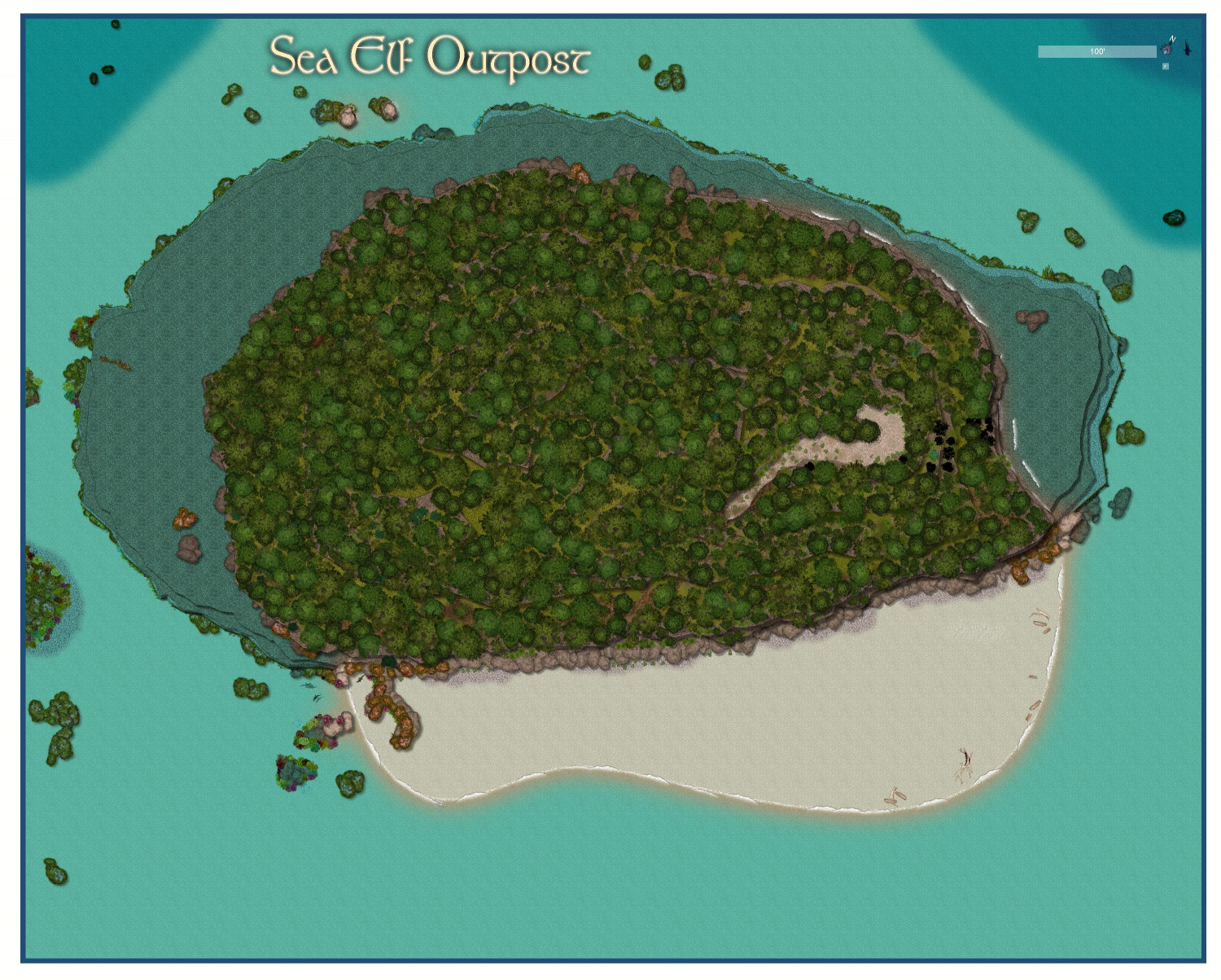
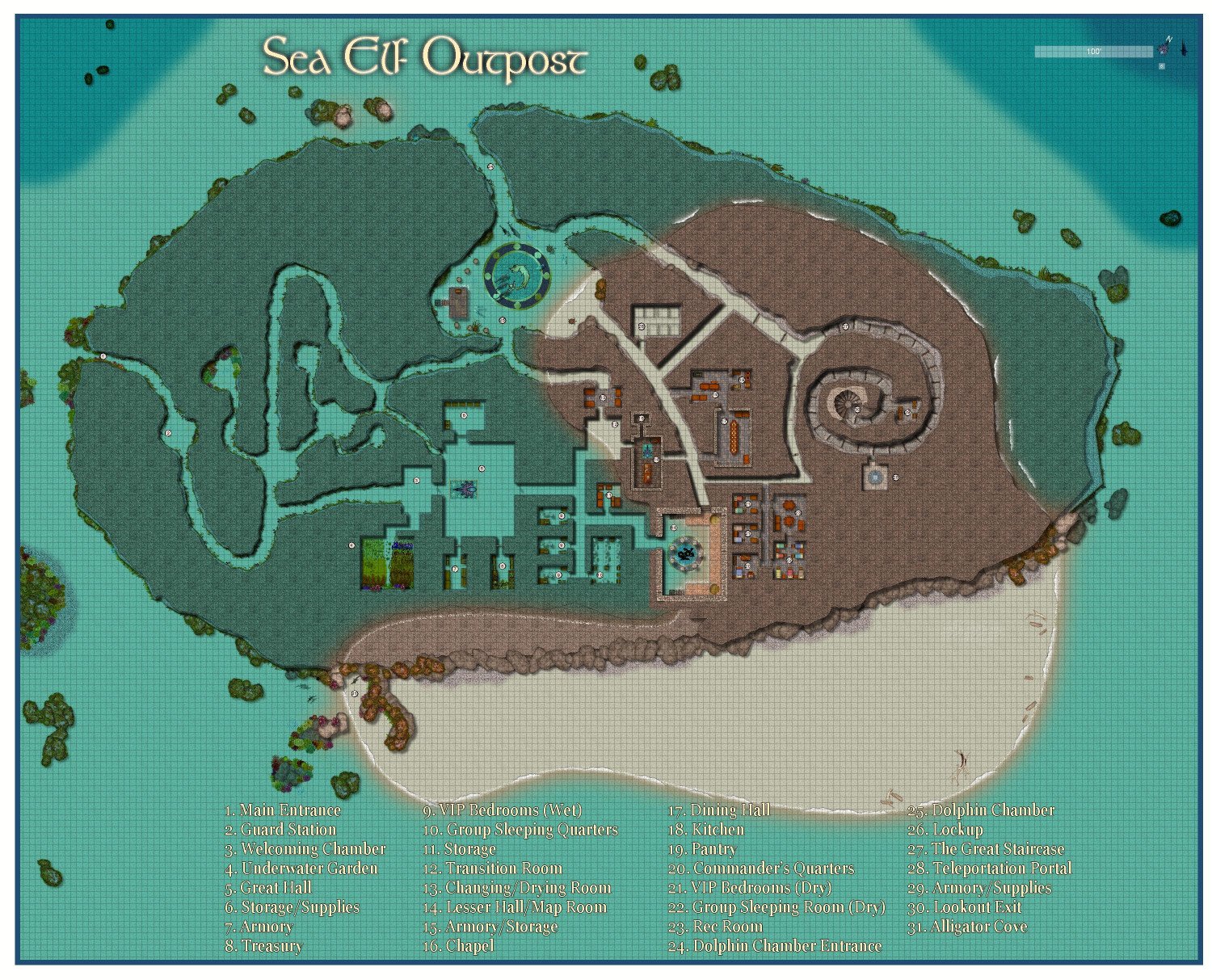
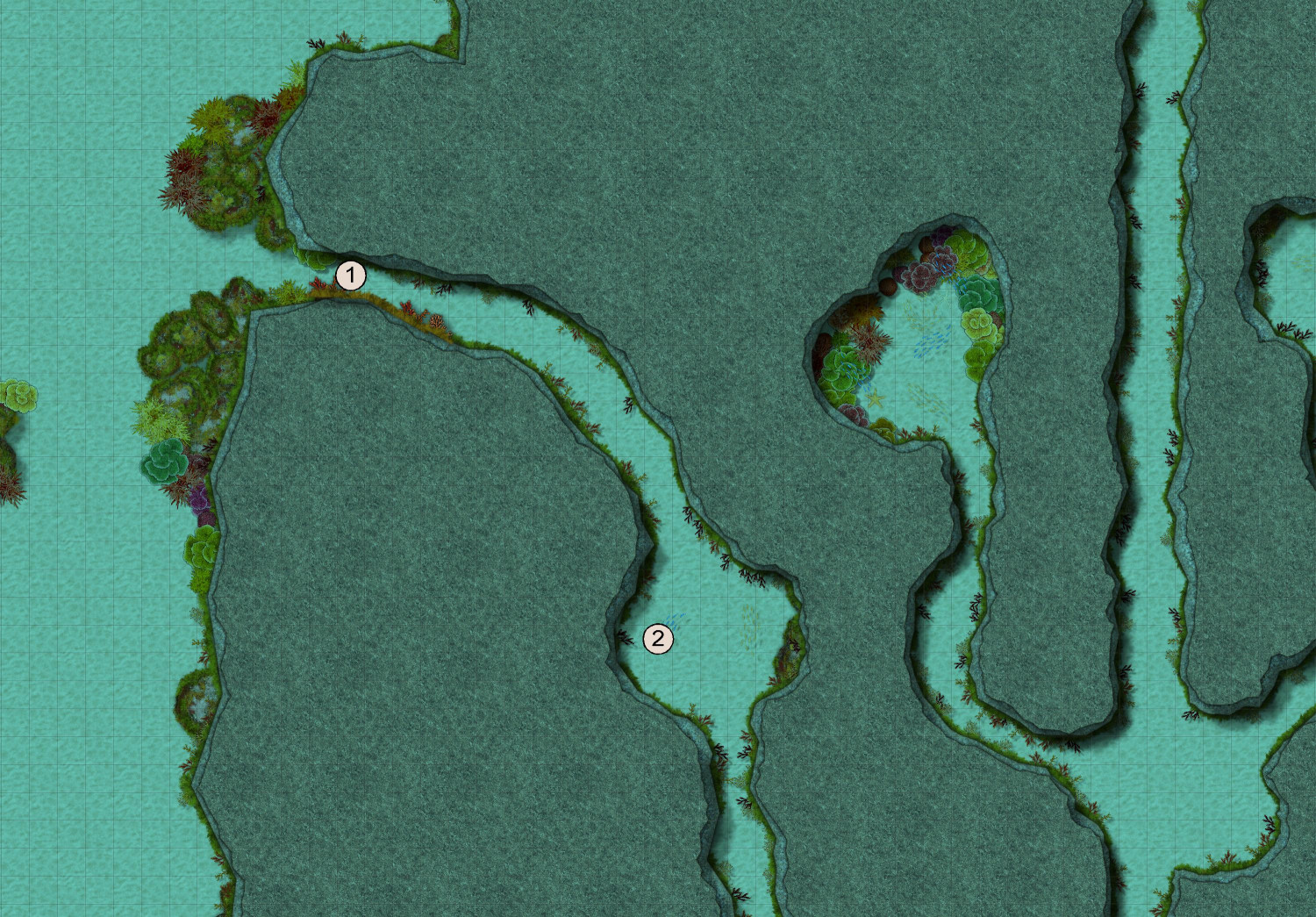
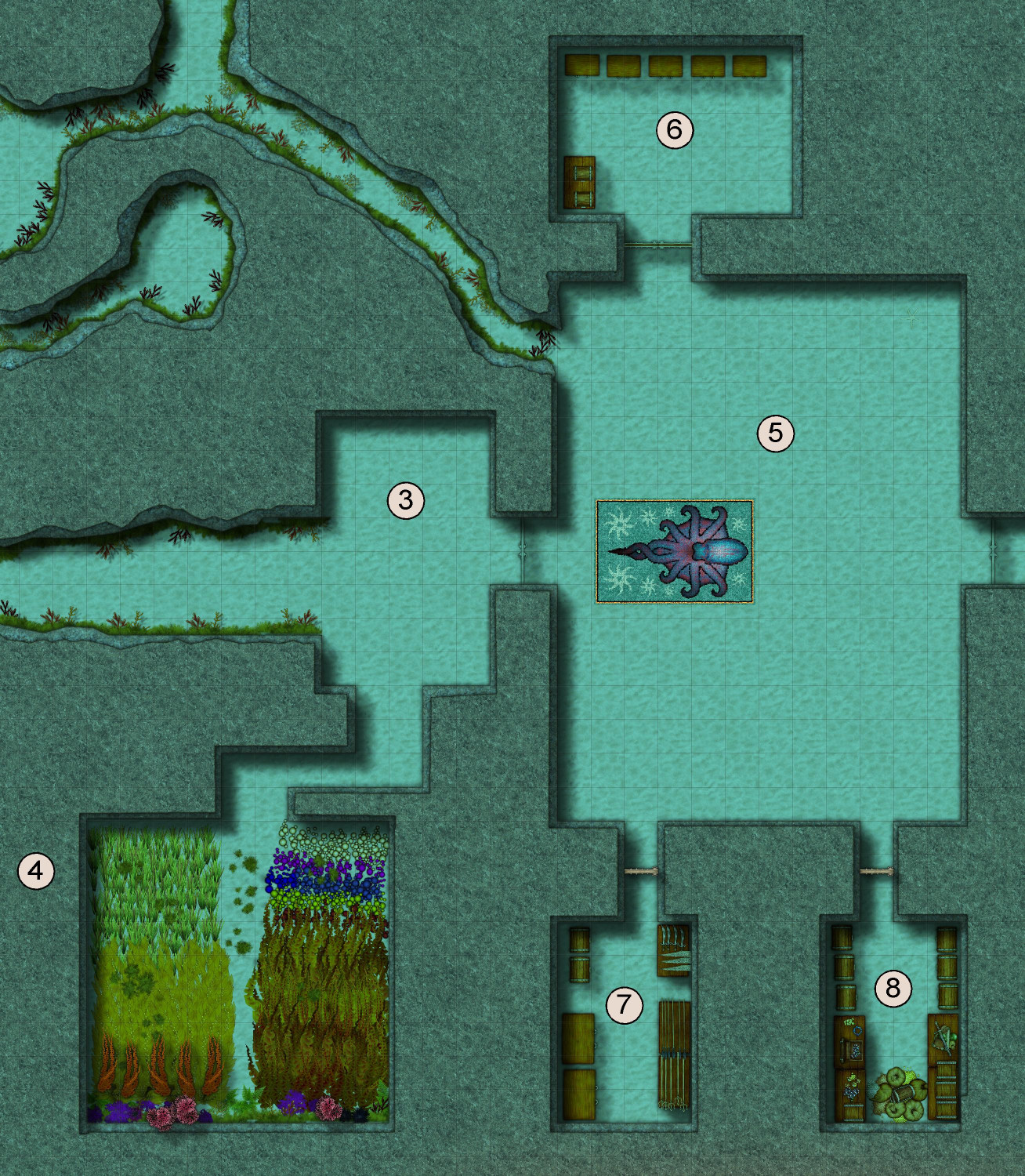
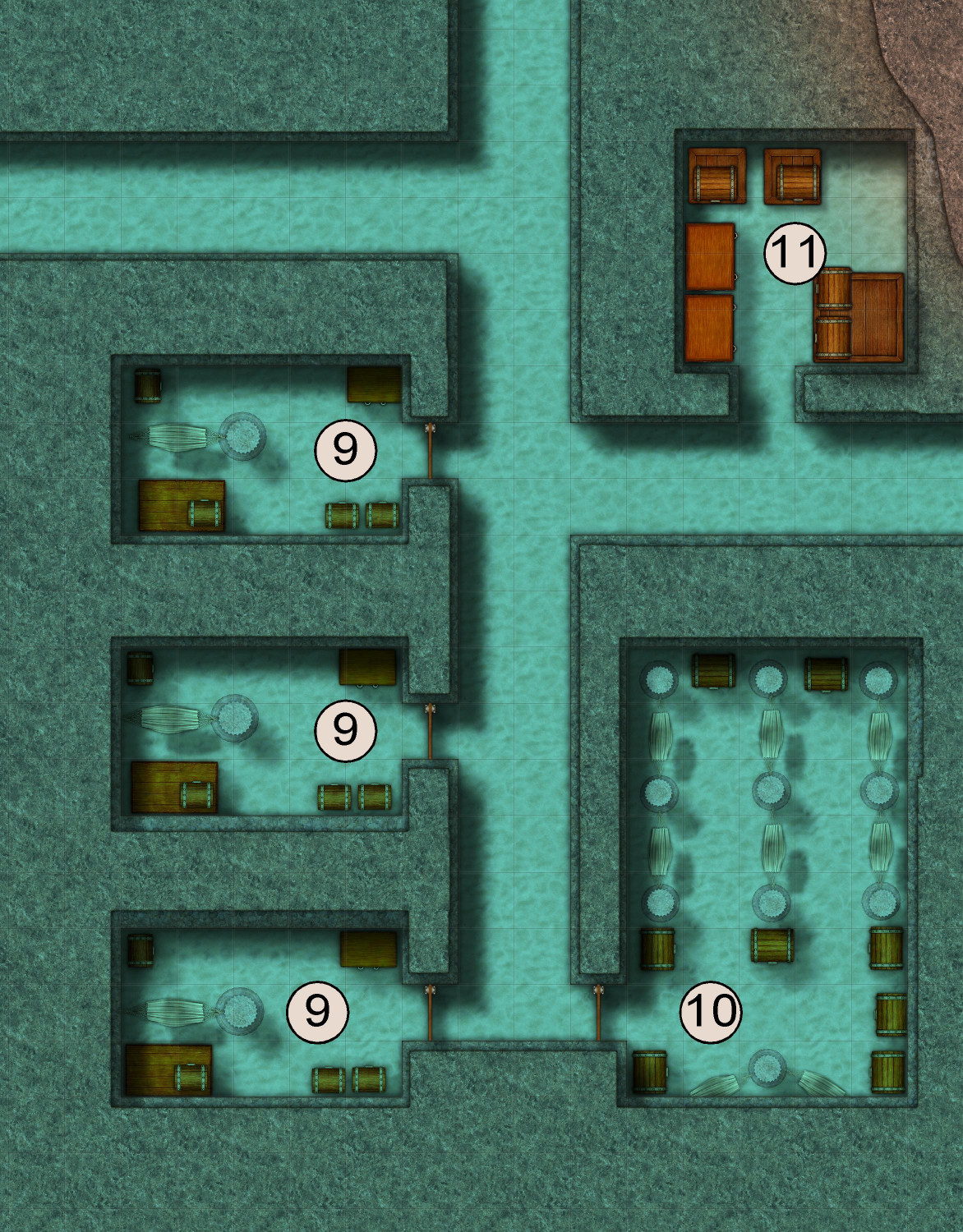
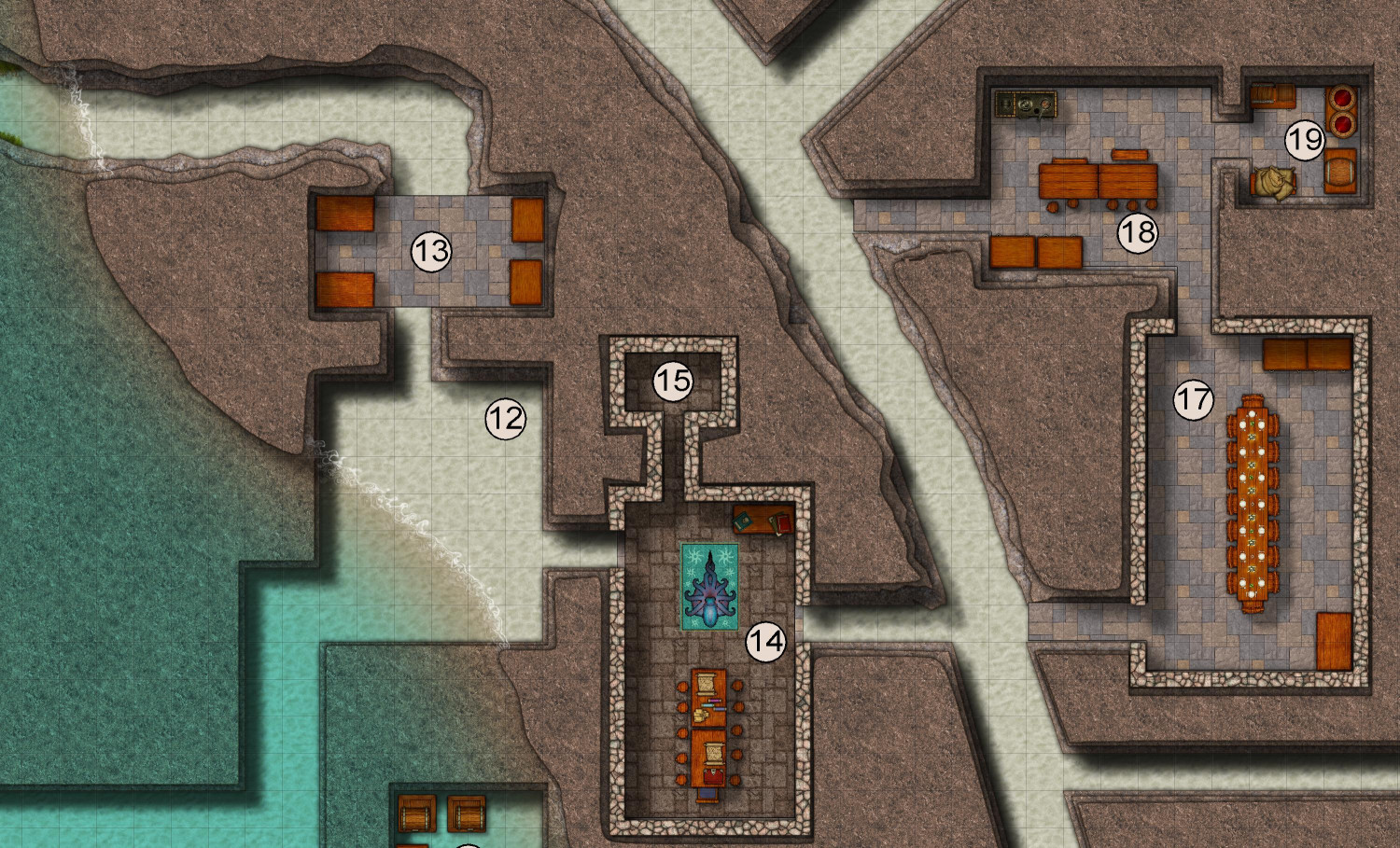
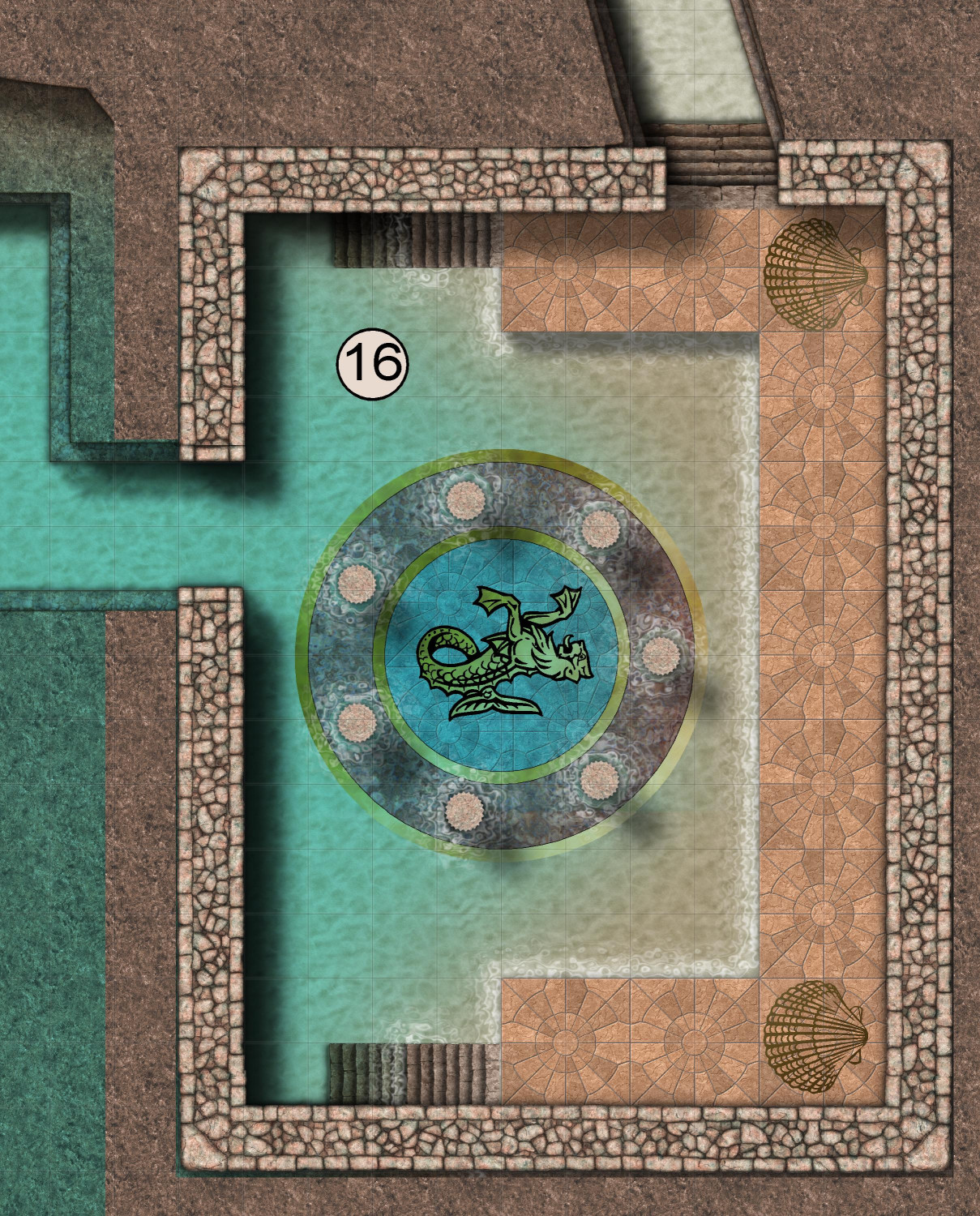
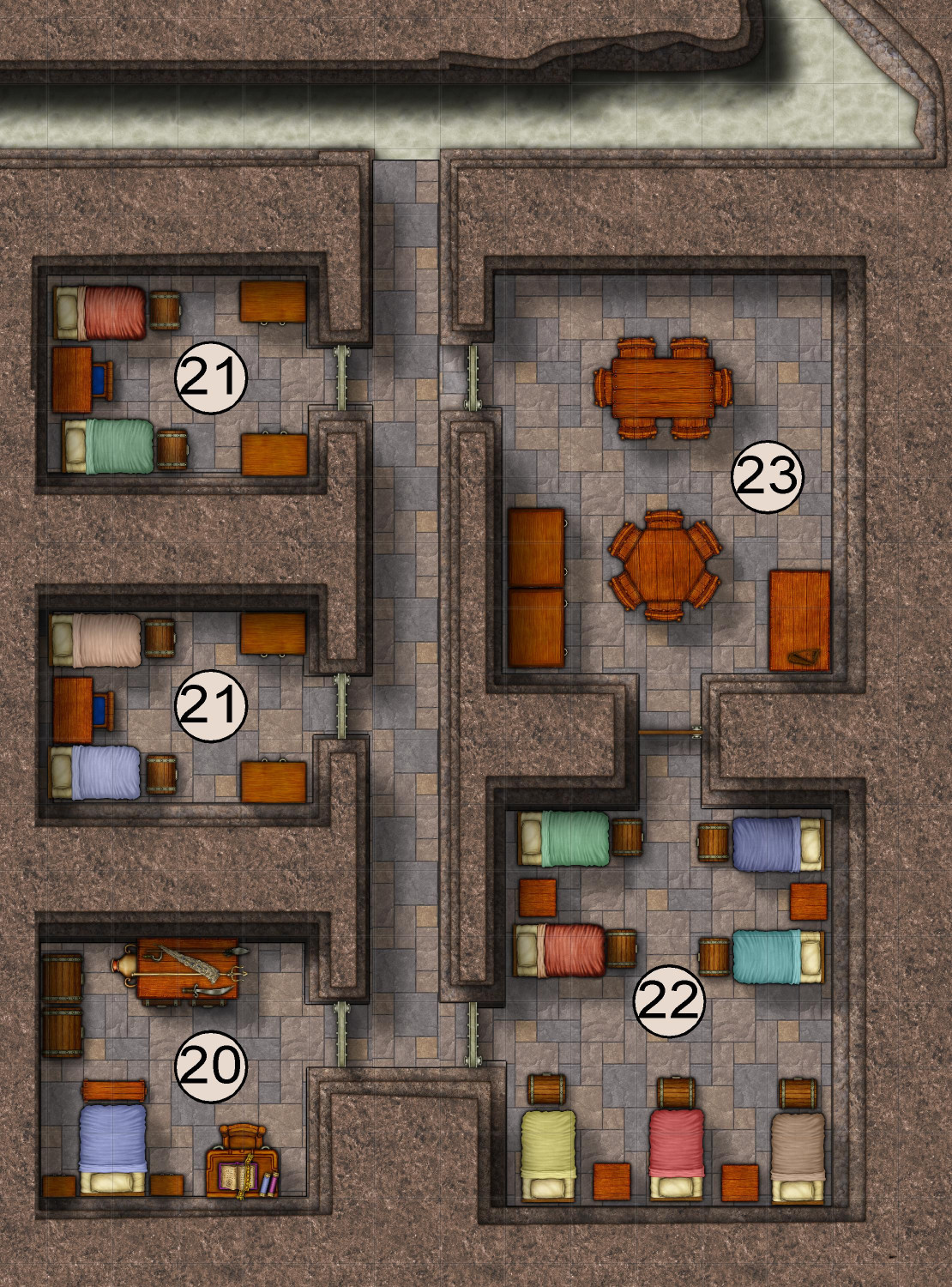
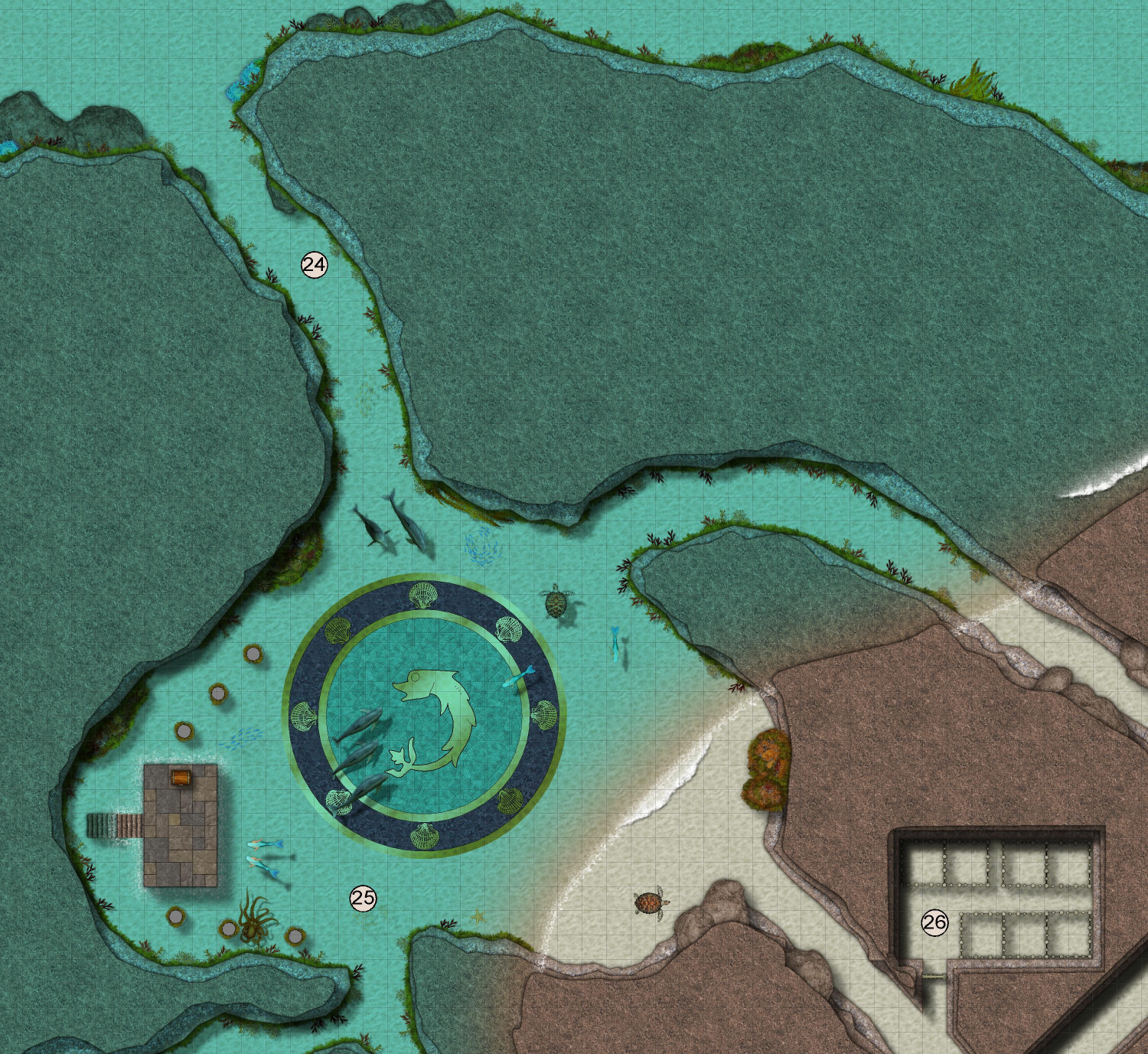
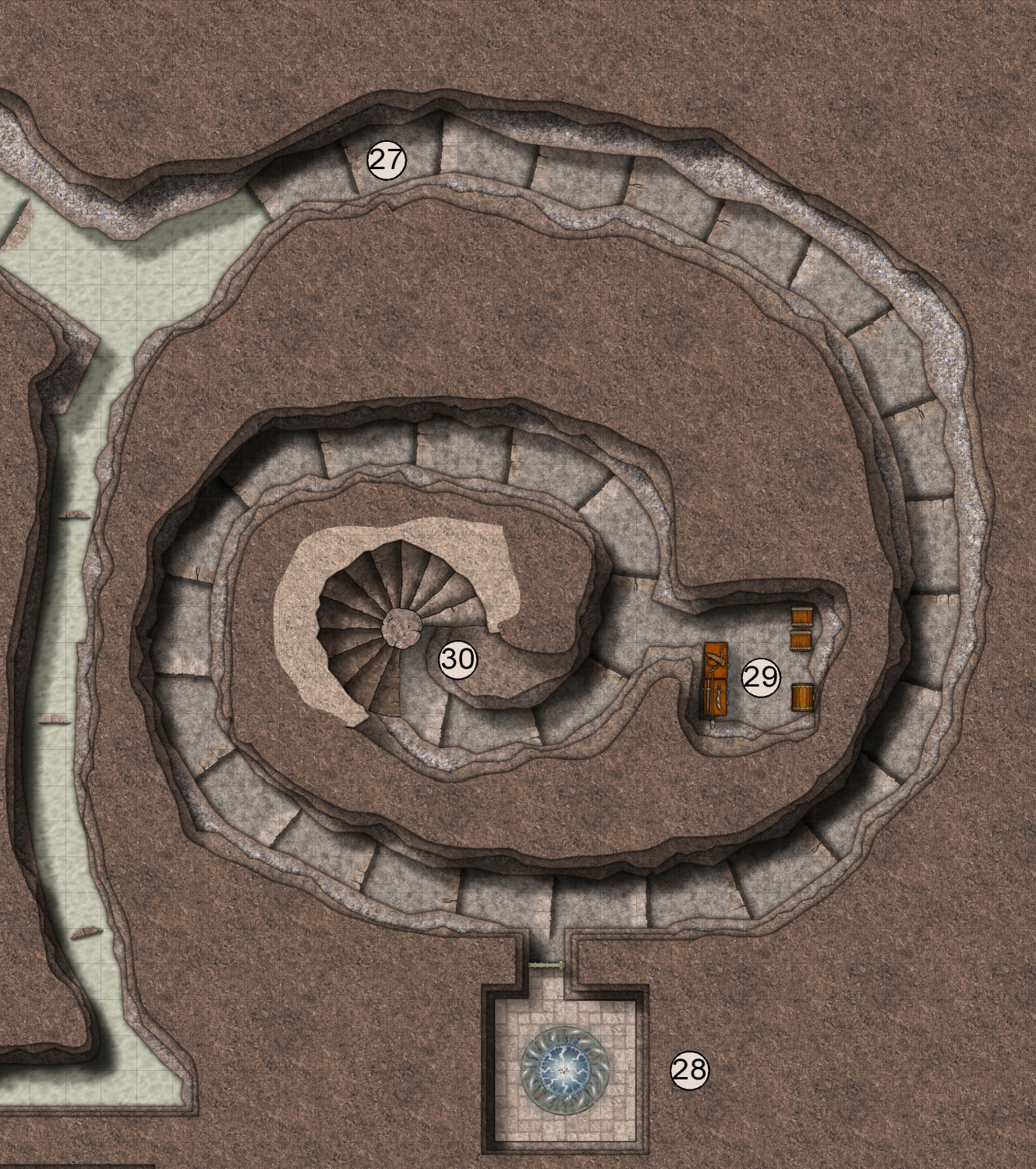
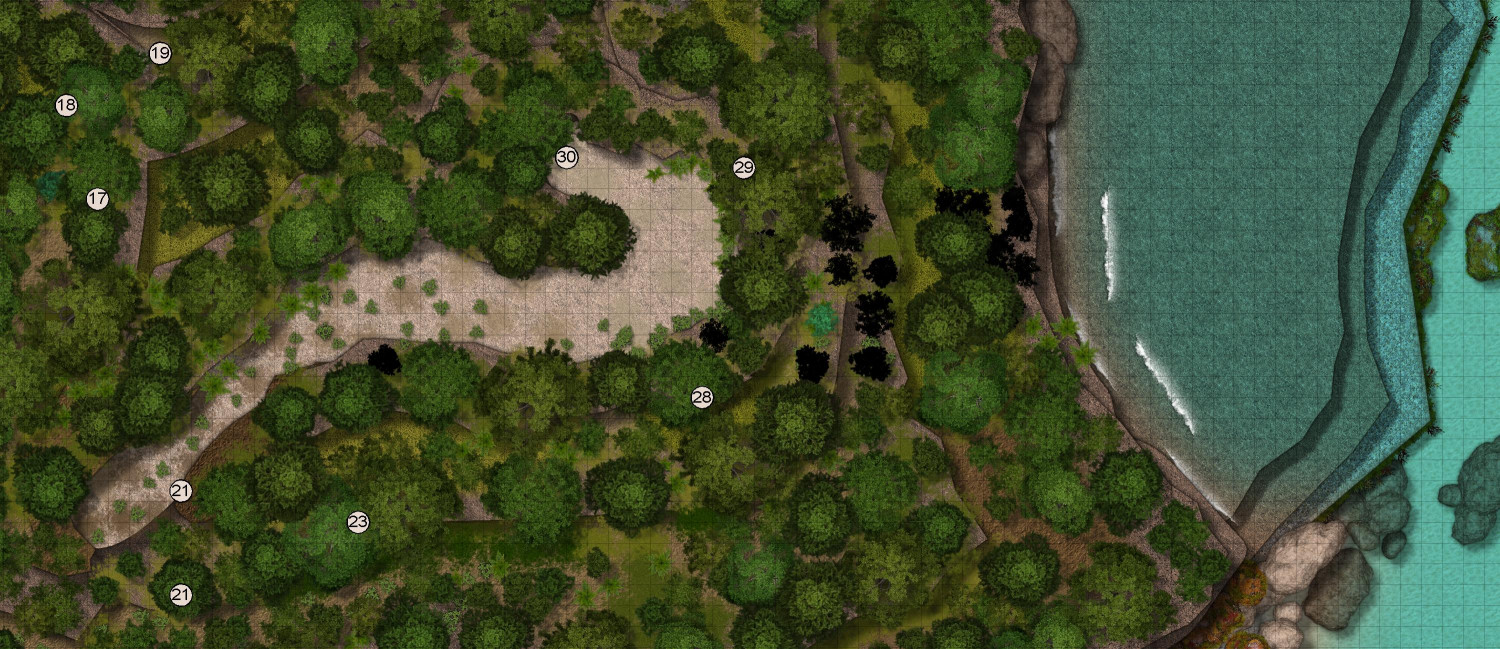
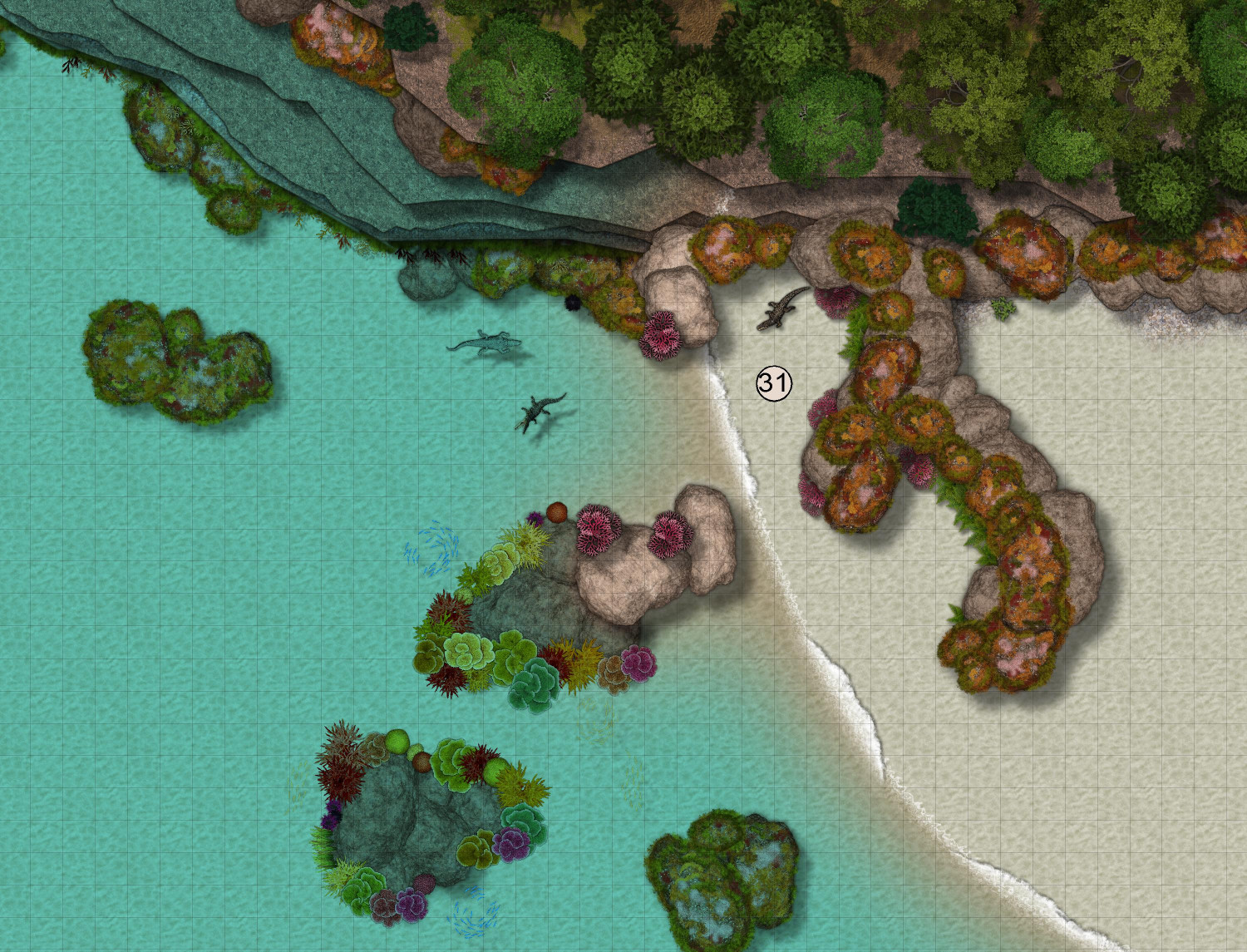




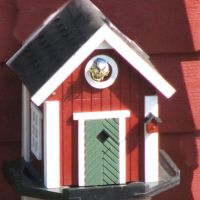
Comments
Wow! Really well worked out and great mapping :D
Thank you! Your Marine Dungeons and Forest Trails are my two favorite annuals, so it was fun to have an opportunity to combine the two.
Yep, a mapper after my own heart - wanting to make maps complicated, with many different features that can be accessed only by turning layers on or off 😉😁!
Only point I would make is the undersea plants need direct sunlight (or a magical equivalent) to grow, and many tunnels and rooms seem to be entirely roofed-over. Since the water seems to be shallow enough around the island, you could add giant kelp forests in places there (which could help further disguise the undersea access tunnels), as well as other marine plants to help here. They really needn't be just close to the shoreline, as so long as the water's less than about 200 metres deep, there'll be enough sunlight for photosynthetic growth.
Kelp forests are a good idea! We’re going to have to assume that the underwater garden has a magical sunlight equivalent. Sea elves have darkvision but I assume they also have luminescent crystals or something for lighting.
There are a lot of edible sea animals like sea cucumbers etc, that may also not need as much light all the time. Perhaps a special lighting system, powered by magic (or solar electricity batteries connected to high tech panels on the island above - LOL - just kidding).
I LOVED the hammock idea for beds undersea. Well thought out, and well illustrated.
Thermal vents. That is a light free source of an ecological system Maybe they designed a piping system for gardening and botanical purposes.
Oh! There is a chimney symbol in the Marine Dungeons symbols. I had to Google “ocean chimney” to figure out what it was — took me to a Wikipedia article on hydrothermal vents. 🤔 Good idea.
Of course, I did put sea grass around the edges of the cave corridors. I could take it out, but maybe it would be easier to say that the sea elves have a magical source of solar light for at least part of the day.
Okay, I made some adjustments based on everyone's feedback. I added some kelp forests outside, and I added some hydrothermal vents/chimneys in a few spots (the garden as well as a few other "dead ends" in the entrance passageways. I put one in the room with the coral. Although coral does not photosynthesize and does not need sunlight, it does consume algae that relies on sunlight for photosynthesis. I am going to suggest that the coral here are able to survive on the microbes that thrive on the vents.
(Maybe some underwater creatures use the vents to cook their food, too?)
We'll still have to assume that luminescent crystals provide ordinary lighting in common areas, and some sort of magical sunlight appears periodically, enough to provide photosynthesis for the foliage in the cavern areas (I decided not to remove them).
I'm making some tweaks to my next marine dungeon based on this as well. But first, here are some images showing the changes to the Sea Elf Outpost.
Some potential adventure hooks off the top of my head:
I am so happy my little suggestion helped. Hydrothermal vents fascinate me.
Awesome work on the map.
Glad to be able to kelp a little 😊!
I'm not averse to hydrothermal vents myself, of course, if on a larger scale of mapping (so far).
Very cool! I don't know much about hydrothermal vents, but I suspect they normally appear on a much larger scale than mine, like you have them. But in a land of fantasy, rules are meant to be broken.
Thank you, everyone, for your help. This map exceeded my hopes and dreams.
Hydrothermal and other undersea vents come in all shapes and sizes, much as they do on land. As I was working with the deep ocean floor, I wanted something like those relatively recently discovered with entire ecosystems, all with no reliance on sunlight. No plants, naturally, but a fascinating variety of creatures that congregate there. No reason you can't have them just as you've illustrated here, certainly!
Here is the map of Menina island insert showing the possible location of the seaelf outpost. As you can see, it is tiny - 0.11 mile 600').
If you want it somewhere else, let me know.
That’s perfect! Thank you. I am doing the write-up today.
I will work on my write up tomorrow, and send it to Remy